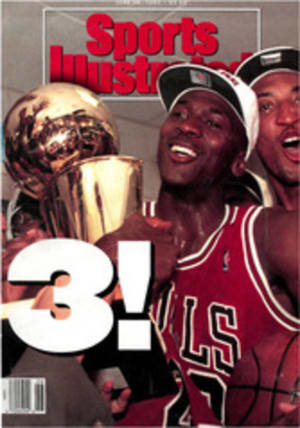
At Long Last, Thank You!
This is the kind of true story that sends network television executives scrambling to clear a slot in their fall schedules. It has all the makings of a not-so-typical Movie of the Week: A one-legged World War II hero defies all odds by playing major league baseball, only to have his true wish granted unexpectedly many years later.
On May 21, 1944, in the skies over Germany, U.S. Army Air Corps Lieut. Bert Shepard dipped his P-38 fighter plane below the cloud cover and was met with enemy ground fire. As bullets ripped open the fuselage of his aircraft, Shepard radioed his squadron leader for help. "It felt like a sledgehammer hit my leg," says Shepard. "I told them I could feel my foot coming loose at the boot."
Minutes later Shepard lost consciousness, and his plane crashed amid the farmlands of Ludwigslust, a town between Hamburg and Berlin. Shepard would have died had it not been for the brave efforts of a Luftwaffe doctor who—as Shepard learned much later—pulled the American airman from the plane and scared off local farmers armed with pitchforks and sticks. Soon afterward, Shepard's wounds were treated at a nearby hospital.
Shepard remained unconscious for several days. He awoke to find his right leg had been amputated below the knee. Although the Luftwaffe doctor stayed at the hospital to ensure that Shepard was well cared for, he had disappeared by the time Shepard regained consciousness.
During the months that followed, Shepard was held at several German camps for wounded prisoners of war. It was in a camp in Meiningen that a Canadian medic named Don Erry fashioned an artificial leg for Shepard, using scrap iron, wood, felt, strips of leather and rivets. Fitted with his prosthesis, Shepard, who had been a minor league pitcher with the Bisbee (Ariz.) Bees before the war, began tossing a cricket ball with other prisoners.
Shortly after arriving in the U.S., Shepard and other POWs met with Undersecretary of War Robert P. Patterson at the Pentagon. "He asked me what I wanted to do," says Shepard. "I told him I wanted to play pro baseball."
So Patterson called his friend Clark Griffith, owner of the Washington Senators, and Shepard was granted a tryout. His prosthesis barely affected his pitching motion, and he made the team. His only major league appearance came on Aug. 4, 1945, when he pitched 5‚Öì innings against the Boston Red Sox, surrendering a run and striking out two batters.
His stint with the Senators, the subsequent jobs he held with several construction firms here and abroad, and his four children and eight grandchildren left Shepard feeling nearly fulfilled, except during moments when his thoughts drifted back to Ludwigslust. "Often I wondered who carried me from the wreck," he says. "Who saved my life?"
Pieces to the puzzle began falling into place last fall when Jamie Brundell, a British businessman, went on a hunting trip in Hungary. During the trip Brundell swapped war stories with other members of the group. One of the men, Ladislaus Loidl, an Austrian doctor, told of how he had rescued a wounded American flier from his downed plane. Loidl's wife, Lilly, had made a dress from the airman's parachute, and he remembered reading the name Bert Shepard on the pilot's dog tags. It was Brundell who suggested that Loidl, 76, try contacting Shepard.
Last month, exactly 49 years after Shepard's plane was shot down, the two were reunited at Loidl's house in Parndorf, Austria. "I prayed for this," says the 72-year-old Shepard. "And after half a century my dream has incredibly come true."
PHOTO
NATIONAL BASEBALL LIBRARY & ARCHIVE, COOPERSTOWN, N.Y
Manager Ossie Bluege eyed Shepard's false leg.
PHOTO
HERBERT KOLLER/TWIB
By chance, Brundell (left) met Loidl (center), which later led to a reunion with Shepard.

